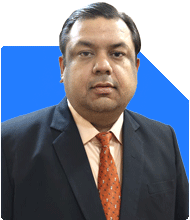Dear Sir,
I am due to retire in 2 years I am likely to have a corpus of 1CR by the time. Currently I have investments in Stocks, MFs,and Land.Total worth of around 1 Cr apart from the amount expected after retirement.With this amount how can I invest for my retirement? I don't have a pension option. My wife is getting a pension of 50K per month now.
2. Recently I have sold a property for 83 lakhs which has not yielded any profit. I can say that it is no loss no profit transaction. The invested corpus was from housing land and our own funds. Do I need to invest the amount I received out of the transaction to escape capital gains tax or not?
Ans: It's great that you are preparing for your retirement with a clear picture of your corpus. Based on your current investments and the Rs 1 crore you expect to receive after retirement, it’s essential to structure a well-diversified retirement plan. Let's explore how to manage this amount wisely to ensure a smooth and comfortable retirement.
You have a mix of investments in stocks, mutual funds (MFs), and land, which indicates a diversified portfolio. However, once you retire, your investment strategy needs to shift towards safety, steady returns, and liquidity.
Assessing Your Retirement Needs
Before deciding on your investment strategy, it’s important to assess your monthly expenses. You have mentioned that your wife receives a pension of Rs 50,000 per month. It’s a good foundation, but you will need to estimate whether this amount is sufficient to cover household expenses, healthcare costs, lifestyle needs, and unforeseen expenses.
If your monthly expenses exceed Rs 50,000, you will need to create a strategy to generate additional income from your investments.
Allocation of the Rs 1 Crore Corpus
When you retire, you’ll need to protect your corpus while still generating returns. Here’s a basic framework for how you can allocate your Rs 1 crore:
Emergency Fund (15-20%)
Keep aside Rs 15-20 lakhs in a safe and liquid investment such as fixed deposits or liquid mutual funds. This will act as an emergency fund and ensure that you have quick access to cash whenever needed without compromising on your long-term investments.
Debt and Fixed Income Instruments (40-50%)
At this stage, safety is key, and you should allocate a large part of your retirement corpus to secure, fixed-income products. This ensures capital protection while giving regular income. You can invest in government bonds, fixed maturity plans (FMPs), or senior citizen savings schemes (SCSS).
These instruments provide predictable returns and are low-risk, making them ideal for retirees seeking steady income. These will also help protect your investments from the volatility associated with stocks.
Equity-Linked Mutual Funds (20-25%)
While you want to play it safe during retirement, keeping a portion of your corpus in equity-linked funds is important. These can generate inflation-beating returns in the long term.
Opting for well-managed, actively managed funds is more suitable than index funds. Actively managed funds have a higher potential for growth as the fund manager adjusts the portfolio to market conditions. This provides an opportunity for better returns compared to index funds, which mirror market indices and are more passive.
Monthly Systematic Withdrawal Plan (SWP)
To generate a regular income, you can invest a portion of your corpus in mutual funds and set up an SWP. This will allow you to withdraw a fixed sum every month, ensuring a steady flow of income post-retirement without exhausting your investments too soon.
Health Insurance and Contingency Fund
Healthcare costs can be a significant burden during retirement. Ensure that both you and your wife are covered under a comprehensive health insurance plan that provides adequate coverage.
Also, build a contingency fund specifically for medical expenses. This can be parked in liquid funds or savings accounts.
Managing the Rs 83 Lakhs from the Property Sale
You mentioned that you recently sold a property for Rs 83 lakhs without making any profit. However, you need to understand if any capital gains tax liability applies. The property sale, even if no profit was made, could still attract capital gains tax depending on the indexed cost of acquisition and the actual sale price.
Here are the next steps for managing the Rs 83 lakhs:
Exemption on Long-Term Capital Gains
To avoid paying capital gains tax, you can consider reinvesting the proceeds into specified avenues under Section 54 or Section 54EC of the Income Tax Act.
If this was a residential property, reinvesting in another residential property within a stipulated time period can exempt you from long-term capital gains tax under Section 54.
Alternatively, you can invest in capital gains bonds (54EC bonds), which offer a tax exemption on the gains. These bonds have a lock-in period of five years, and while the returns are modest, they provide a safe and tax-efficient way to manage your gains.
Final Insights on Your Retirement Plan
To summarise, your retirement plan needs a balance between generating sufficient income and ensuring capital protection. Here's a detailed step-by-step approach:
Create an emergency fund with Rs 15-20 lakhs for liquidity.
Allocate 40-50% of your corpus to safe, fixed-income instruments like government bonds or SCSS for regular income.
Maintain 20-25% in equity-linked mutual funds for growth and inflation protection.
Use an SWP to withdraw a fixed sum monthly to cover additional income needs.
Calculate your capital gains from the property sale and reinvest in Section 54 or 54EC instruments to save on taxes.
Ensure you have comprehensive health insurance coverage to manage medical expenses.
By following this approach, you will ensure your financial independence in retirement and can confidently enjoy the next phase of your life.
Best Regards,
K. Ramalingam, MBA, CFP,
Chief Financial Planner,
www.holisticinvestment.in
https://www.youtube.com/@HolisticInvestment































